Related Research Articles

A natural disaster is the very harmful impact on a society or community after a natural hazard event. Some examples of natural hazard events include avalanches, droughts, earthquakes, floods, heat waves, landslides, tropical cyclones, volcanic activity and wildfires. Additional natural hazards include blizzards, dust storms, firestorms, hails, ice storms, sinkholes, thunderstorms, tornadoes and tsunamis. A natural disaster can cause loss of life or damage property. It typically causes economic damage. How bad the damage is depends on how well people are prepared for disasters and how strong the buildings, roads, and other structures are. Scholars have been saying that the term natural disaster is unsuitable and should be abandoned. Instead, the simpler term disaster could be used. At the same time the type of hazard would be specified. A disaster happens when a natural or human-made hazard impacts a vulnerable community. It results from the combination of the hazard and the exposure of a vulnerable society.
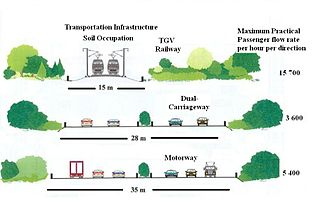
Sustainable urban infrastructure expands on the concept of urban infrastructure by adding the sustainability element with the expectation of improved and more resilient urban development. In the construction and physical and organizational structures that enable cities to function, sustainability also aims to meet the needs of the present generation without compromising the capabilities of the future generations.

Climate change adaptation is the process of adjusting to the effects of climate change. These can be both current or expected impacts. Adaptation aims to moderate or avoid harm for people, and is usually done alongside climate change mitigation. It also aims to exploit opportunities. Humans may also intervene to help adjustment for natural systems. There are many adaptation strategies or options. They can help manage impacts and risks to people and nature. The four types of adaptation actions are infrastructural, institutional, behavioural and nature-based options. Some examples of these are building seawalls or inland flood defenses, providing new insurance schemes, changing crop planting times or varieties, and installing green roofs or green spaces. Adaptation can be reactive or proactive.
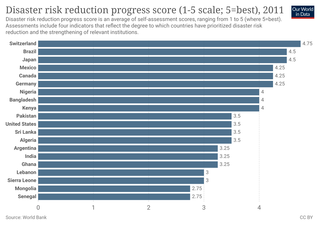
Disaster risk reduction aims to make disasters less likely to happen. The approach, also called DRR or disaster risk management, also aims to make disasters less damaging when they do occur. DRR aims to make communities stronger and better prepared to handle disasters. In technical terms, it aims to make them more resilient or less vulnerable. When DRR is successful, it makes communities less the vulnerable because it mitigates the effects of disasters. This means DRR can make risky events fewer and less severe. Climate change can increase climate hazards. So development efforts often consider DRR and climate change adaptation together.
Climate risk is the potential for problems for societies or ecosystems from the impacts of climate change. The assessment of climate risk is based on formal analysis of the consequences, likelihoods and responses to these impacts. Societal constraints can also shape adaptation options. There are different values and preferences around risk, resulting in differences of risk perception.

In ecology, resilience is the capacity of an ecosystem to respond to a perturbation or disturbance by resisting damage and subsequently recovering. Such perturbations and disturbances can include stochastic events such as fires, flooding, windstorms, insect population explosions, and human activities such as deforestation, fracking of the ground for oil extraction, pesticide sprayed in soil, and the introduction of exotic plant or animal species. Disturbances of sufficient magnitude or duration can profoundly affect an ecosystem and may force an ecosystem to reach a threshold beyond which a different regime of processes and structures predominates. When such thresholds are associated with a critical or bifurcation point, these regime shifts may also be referred to as critical transitions.
The Group on Earth Observations (GEO) coordinates international efforts to build a Global Earth Observation System of Systems (GEOSS). It links existing and planned Earth observation systems and supports the development of new ones in cases of perceived gaps in the supply of environment-related information. It aims to construct a global public infrastructure for Earth observations consisting of a flexible and distributed network of systems and content providers.

The aim of water security is to make the most of water's benefits for humans and ecosystems. The second aim is to limit the risks of destructive impacts of water to an acceptable level. These risks include for example too much water (flood), too little water or poor quality (polluted) water. People who live with a high level of water security always have access to "an acceptable quantity and quality of water for health, livelihoods and production". For example, access to water, sanitation and hygiene services is one part of water security. Some organizations use the term water security more narrowly for water supply aspects only.

Urban resilience has conventionally been defined as the "measurable ability of any urban system, with its inhabitants, to maintain continuity through all shocks and stresses, while positively adapting and transforming towards sustainability".
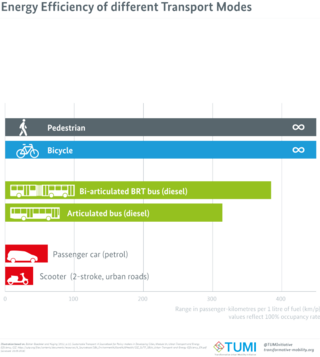
Sustainable urbanism is both the study of cities and the practices to build them (urbanism), that focuses on promoting their long term viability by reducing consumption, waste and harmful impacts on people and place while enhancing the overall well-being of both people and place. Well-being includes the physical, ecological, economic, social, health and equity factors, among others, that comprise cities and their populations. In the context of contemporary urbanism, the term cities refers to several scales of human settlements from towns to cities, metropolises and mega-city regions that includes their peripheries / suburbs / exurbs. Sustainability is a key component to professional practice in urban planning and urban design along with its related disciplines landscape architecture, architecture, and civil and environmental engineering. Green urbanism and ecological urbanism are other common terms that are similar to sustainable urbanism, however they can be construed as focusing more on the natural environment and ecosystems and less on economic and social aspects. Also related to sustainable urbanism are the practices of land development called Sustainable development, which is the process of physically constructing sustainable buildings, as well as the practices of urban planning called smart growth or growth management, which denote the processes of planning, designing, and building urban settlements that are more sustainable than if they were not planned according to sustainability criteria and principles.
Vulnerability refers to "the quality or state of being exposed to the possibility of being attacked or harmed, either physically or emotionally." The understanding of social and environmental vulnerability, as a methodological approach, involves the analysis of the risks and assets of disadvantaged groups, such as the elderly. The approach of vulnerability in itself brings great expectations of social policy and gerontological planning. Types of vulnerability include social, cognitive, environmental, emotional or military.

The United Nations Office for Disaster Risk Reduction (UNDRR) was created in December 1999 to ensure the implementation of the International Strategy for Disaster Reduction.

The Climate and Development Knowledge Network (CDKN) works to enhance the quality of life for the poorest and most vulnerable to climate change. CDKN does this by combining research, advisory services and knowledge management in support of locally owned and managed policy processes. It works in partnership with decision-makers in the public, private and non-governmental sectors nationally, regionally and globally.

In the fields of engineering and construction, resilience is the ability to absorb or avoid damage without suffering complete failure and is an objective of design, maintenance and restoration for buildings and infrastructure, as well as communities. A more comprehensive definition is that it is the ability to respond, absorb, and adapt to, as well as recover in a disruptive event. A resilient structure/system/community is expected to be able to resist to an extreme event with minimal damages and functionality disruptions during the event; after the event, it should be able to rapidly recovery its functionality similar to or even better than the pre-event level.
Climate resilience is a concept to describe how well people or ecosystems are prepared to bounce back from certain climate hazard events. The formal definition of the term is the "capacity of social, economic and ecosystems to cope with a hazardous event or trend or disturbance". For example, climate resilience can be the ability to recover from climate-related shocks such as floods and droughts. Different actions can increase climate resilience of communities and ecosystems to help them cope. They can help to keep systems working in the face of external forces. For example, building a seawall to protect a coastal community from flooding might help maintain existing ways of life there.
Cyber resilience refers to an entity's ability to continuously deliver the intended outcome, despite cyber attacks. Resilience to cyber attacks is essential to IT systems, critical infrastructure, business processes, organizations, societies, and nation-states. A related term is cyberworthiness, which is an assessment of the resilience of a system from cyber attacks. It can be applied to a range of software and hardware elements.
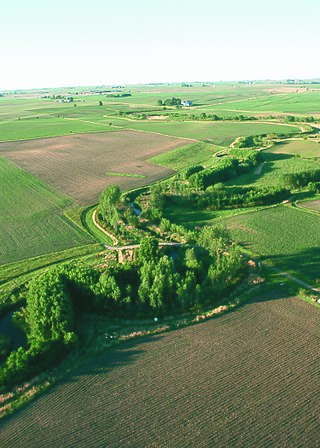
Nature-based solutions describe the development and use of nature (biodiversity) and natural processes to address diverse socio-environmental issues. These issues include climate change mitigation and adaptation, human security issues such as water security and food security, and disaster risk reduction. The aim is that resilient ecosystems provide solutions for the benefit of both societies and biodiversity. The 2019 UN Climate Action Summit highlighted nature-based solutions as an effective method to combat climate change. For example, nature-based systems for climate change adaptation can include natural flood management, restoring natural coastal defences, and providing local cooling.
Ecosystem-based adaptation encompasses a broad set of approaches to adapt to climate change. They all involve the management of ecosystems and their services to reduce the vulnerability of human communities to the impacts of climate change. The Convention on Biological Diversity (CBD) defines EBA as "the use of biodiversity and ecosystem services as part of an overall adaptation strategy to help people to adapt to the adverse effects of climate change".
Climate change vulnerability is a concept that describes how strongly people or ecosystems are likely to be affected by climate change. Its formal definition is the "propensity or predisposition to be adversely affected" by climate change. It can apply to humans and also to natural systems. Issues around the capacity to cope and adapt are also part of this concept. Vulnerability is a component of climate risk. It differs within communities and also across societies, regions, and countries. It can increase or decrease over time. Vulnerability is generally a bigger problem for people in low-income countries than for those in high-income countries.
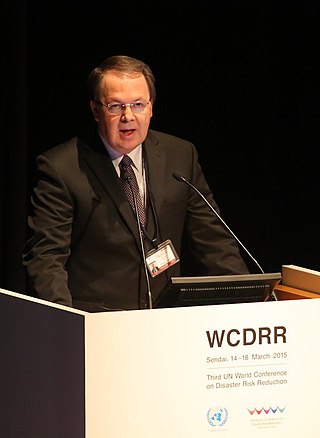
Omar-Darío Cardona Arboleda is a civil engineer, academic, and author. He is a Titular Professor of integrated disaster risk management and climate change adaptation in the Institute of Environment Studies at the National University of Colombia, Co-founder, and CEO of Ingeniar: Risk Intelligence.
References
- ↑ Bosher, Lee; Chmutina, Ksenia (April 3, 2017). Disaster Risk Reduction for the Built Environment. 111 River Street. Hoboken, NJ 07030: John Wiley & Sons. p. 32. ISBN 9781118921500.
{{cite book}}: CS1 maint: location (link) - ↑ Fran H., Norris; Susan P., Stevens (March 2008). "Community Resilience as a Metaphor, Theory, Set of Capacities, and Strategy for Disaster Readiness". American Journal of Community Psychology. 41 (1–2): 127–150. doi:10.1007/s10464-007-9156-6. PMID 18157631. S2CID 45612103.
- ↑ Sharifi, Ayyoob (October 2016). "A critical review of selected tools for assessing community resilience". Ecological Indicators. 69: 629–647. doi: 10.1016/j.ecolind.2016.05.023 .
- ↑ Sharifi, Ayyoob; Yamagata, Yoshiki (September 2016). "On the suitability of assessment tools for guiding communities towards disaster resilience". International Journal of Disaster Risk Reduction. 18: 115–124. Bibcode:2016IJDRR..18..115S. doi:10.1016/j.ijdrr.2016.06.006.
- ↑ "Pablo Servigne: "Je défends un catastrophisme positif"". Usbek&Rica (in French). 2016-08-10. Retrieved 2020-02-03.
- ↑ Karim Fathi: Die multi-resiliente Gesellschaft: Ansatzpunkte für die Corona-Krise und darüber hinaus. In: Forschungsjournal Soziale Bewegungen, Vol. 33, Issue 1, 2020.
- ↑ Fathi, K. (2022): Multi-Resilience – Development – Sustainability: Requirements for Securing the Future of Societies in the 21st Century. Springer
- ↑ Karim Fathi: Resilienz im Spannungsfeld zwischen Nachhaltigkeit und Entwicklung - gesellschaftliche Zukunftssicherung im 21. Jahrhundert. Springer, 2019
- ↑ Fathi, K. (2022): Multi-Resilience – Development – Sustainability: Requirements for Securing the Future of Societies in the 21st Century. Springer
- ↑ Fathi, K. (2022): Multi-Resilience – Development – Sustainability: Requirements for Securing the Future of Societies in the 21st Century. Springer
- ↑ "Topics | NIST". www.nist.gov. Archived from the original on 2017-11-10.
- ↑ "Topics | NIST". www.nist.gov. Archived from the original on 2017-11-10.
- ↑ Patel, Sonny S.; Rogers, M. Brooke; Amlôt, Richard; Rubin, G. James (February 2017). "What Do We Mean by 'Community Resilience'? A Systematic Literature Review of How It Is Defined in the Literature". PLOS Currents: Disasters. 1. PMC 5693357 . PMID 29188132.
- ↑ Guidotti, Roberto; Chmielewski, Hana (September 2016). "Modeling the resilience of critical infrastructure: the role of network dependencies". Sustainable and Resilient Infrastructure. 1 (3–4): 153–159. doi:10.1080/23789689.2016.1254999. PMC 5557302 . PMID 28825037.
- ↑ IPCC, 2022: Summary for Policymakers [H.-O. Pörtner, D.C. Roberts, E.S. Poloczanska, K. Mintenbeck, M. Tignor, A. Alegría, M. Craig, S. Langsdorf, S. Löschke, V. Möller, A. Okem (eds.)]. In: Climate Change 2022: Impacts, Adaptation and Vulnerability. Contribution of Working Group II to the Sixth Assessment Report of the Intergovernmental Panel on Climate Change [H.-O. Pörtner, D.C. Roberts, M. Tignor, E.S. Poloczanska, K. Mintenbeck, A. Alegría, M. Craig, S. Langsdorf, S. Löschke, V. Möller, A. Okem, B. Rama (eds.)]. Cambridge University Press, Cambridge, UK and New York, NY, USA, pp. 3–33, doi:10.1017/9781009325844.001.
- 1 2 3 4 Grasham, Catherine Fallon; Calow, Roger; Casey, Vincent; Charles, Katrina J.; de Wit, Sara; Dyer, Ellen; Fullwood-Thomas, Jess; Hirons, Mark; Hope, Robert; Hoque, Sonia Ferdous; Jepson, Wendy; Korzenevica, Marina; Murphy, Rebecca; Plastow, John; Ross, Ian (2021). "Engaging with the politics of climate resilience towards clean water and sanitation for all". npj Clean Water. 4 (1): 42. Bibcode:2021npjCW...4...42G. doi: 10.1038/s41545-021-00133-2 . ISSN 2059-7037.
 Text was copied from this source, which is available under a Creative Commons Attribution 4.0 International License
Text was copied from this source, which is available under a Creative Commons Attribution 4.0 International License - ↑ Charles, Katrina J.; Howard, Guy; Villalobos Prats, Elena; Gruber, Joshua; Alam, Sadekul; Alamgir, A.S.M.; Baidya, Manish; Flora, Meerjady Sabrina; Haque, Farhana; Hassan, S.M. Quamrul; Islam, Saiful (2022). "Infrastructure alone cannot ensure resilience to weather events in drinking water supplies". Science of the Total Environment. 813: 151876. Bibcode:2022ScTEn.813o1876C. doi: 10.1016/j.scitotenv.2021.151876 . hdl: 1983/92cc5791-168b-457a-93c7-458890f1bf26 . PMID 34826465.
- ↑ FAO (2016). "Resilience Index Measurement and Analysis - II" (PDF).
- ↑ FSIN (2014). "A Common Analytical Model for Resilience Measurement" (PDF). Food Security Information Network.
- ↑ Jones, Lindsey; D'Errico (2019). "Resilient, but from whose perspective? Like-for-like comparisons of objective and subjective measures of resilience" (PDF). London School of Economics and Political Science.